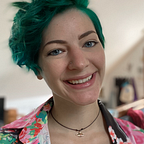The Diversity Problem in Recent AAA Games
It would be a lie to say that AAA developers aren’t paying increasing attention to issues of diversity in their characters and games. Recent big name IPs have included and even featured characters of all races and sexualities, largely to great success. However, despite accolades and promises from developers to continue this trend, there are underlying issues that are preventing any foundational change to the game development scene.
It would be presumptuous of me to organize issues of diversity in games into any prioritized list, but the two most glaring issues in current AAA games are the lack of protagonists of color and the lack of body diversity in female characters. These problems have been addressed again and again by numerous video game critics, yet major developers barely do lip service to these consistent and easily fixable issues.
Take, for example, Overwatch, developed by games giant and all-around good guys Blizzard. To create this game, Blizzard took the concept of an FPS and turned it on its head. Not only did they choose cheeky female hero Tracer to be the poster girl for the game, they recently revealed in a holiday-themed comic that she has a girlfriend. A badass queer lady shooter heading up one of the most popular games of the year? Count me in!
And yet.
One look at Overwatch’s roster of characters reveals sexism in the design so blatantly obvious, it’s a wonder no one on the dev team noticed. Most of the women are human, attractive, younger, and super thin with curvy figures. Even when Blizzard introduced Ana, an older Egyptian woman, they gave her the same thin form and feminine features. Though the women of Overwatch are more clothed than most female video game characters, most of them wear some sort of skin-tight outfit that clearly accentuates their breasts and butts. The sniper Widowmaker runs around in high heeled boots, ensuring every enemy can hear her coming from yards away. Architech Symmetra wears a dress that is cut up to her hip for no discernible reason.
On the other hand, the male heroes come in all shapes, sizes, and ages, and are for the most part, fully clothed. A line up of the female characters reveals very little in diversity of shape or size. At least half the male roster is some sort of caricature, whether it’s the dwarf-like Torbjorn or the obese grunt Roadhog. None of the female character designs are meant to be humorous or exaggerated, demonstrating that Blizzard approached their male and female heroes very differently.
Although Blizzard’s discrepancies in female character design are disappointing, they excel in a few areas that other similarly “diverse” AAA games do not. For one, they actually have people of color voicing the characters of color (for the most part). Their female characters can hold their own against male characters in fights, and they all have well-developed backstories.
Another game developer praised for its diversity, Naughty Dog, creates well-developed and less-sexualized female characters. However, their two most recent games, The Last of Us and Uncharted 4, have still focused mostly on the male protagonist, allowing little or no time for the player to connect with the female characters. In The Last of Us, Ellie is an integral part of the story, yet she is only playable for about an hour of the game, and she’s not allowed any agency in her story at the end of the game. In addition, the revelation that she is queer is not even explained in the actual game, and players must get the DLC to play through her poignant and character-defining backstory. Uncharted 4 has promised a DLC featuring two female characters, yet the game itself sidelines and stereotypes its female characters.
On top of that, the antagonist of Uncharted 4, Nadine, is a South African black woman voiced by a white woman, which leads me to the next big issue: voice acting.
A brief list of characters of color voiced by people of color
Lee Everett (The Walking Dead)
Vivienne (Dragon Age: Inquisition) *
*Vivienne is a black character voiced by a British-Indian voice actress
A brief list of characters of color voiced by white people
Nilin (Remember Me)
Nadine (Uncharted 4)
Aveline de Grandpré (Assassin’s Creed III: Liberation)
Clementine (The Walking Dead)
Raiden (Mortal Kombat X)
Pharah (Overwatch)
This limited list reveals a big problem in the voice acting industry — what is known as “digital blackface.” Similar to live action acting, voice actors of color have a much harder time getting high-profile roles than white actors. The practice of white actors playing nonwhite characters is largely frowned upon in movies and TV shows, yet it prevails in voice acting.
When the appearance of people of color in video games is few and far between, it’s important for dev studios to ensure these characters are not stereotypical and are voiced by someone of the character’s ethnicity. I wracked my brain trying to think of a recent game that featured a person of color as the sole protagonist and aside from Remember Me (Nilin is half black, though she is voiced by a white Welsh actress), I couldn’t think of any prominent examples.
So the question remains: will we see better representation in forthcoming video games? Game developers are slowly noticing the benefits of creating characters that represent a wide variety of people, and the more diverse indie scene is gaining momentum. However, it remains to be seen if AAA developers will take critiques to heart and truly transform the industry.
